Want to know more about the range of surfboard shapes? Here’s everything you need to know about them all – inc picking the best board for the right waves!
All surfboards are not created equal and you’ll quickly discover that there’s a huge range of surfboard shapes to choose from.
 From traditional shortboards through to super niche asymmetrical boards – there’s something to suit every style of surfer and of course the waves you’ll be surfing too.
From traditional shortboards through to super niche asymmetrical boards – there’s something to suit every style of surfer and of course the waves you’ll be surfing too.
So if you’re looking to grab a new board, figure out your next custom surfboard or simply learn a bit more about the surfboard shapes out there here’s my rundown of pretty much everything you could ride.
Including the level of surfer their best suited for and the waves they’ll perform best on!
Different Surfboard Shapes – Everything You Need To Know!
Contents
Longboard
Ah the trusty longboard, aka the Log. Longboards are exactly as they’re described – long, boards!
 Generally anything 9 foot plus is considered a longboard and it’s the original style of surfboard shape – dating back to the very first surfboards!
Generally anything 9 foot plus is considered a longboard and it’s the original style of surfboard shape – dating back to the very first surfboards!
Logging (a surf term for riding longboards) has seen a revival in recent years (after the shortboard revolution) with more and more surfers enjoying the laid back cruise vibes of them. If you’re buying a quiver of surfboards then a good longboard is a must have!
Usually setup with a single fin there are still variety of longboards to choose from – including performance longboards through to traditional nose riders.
Suitable for a huge range of surfers, standing up on a longboard is pretty easy and you’ll certainly have a high wave count as they don’t take much effort to catch waves on. Riding a longboard with style and performing manoeuvres like hang tens, hang fives and big turns does require a lot of skill though.
I’d personally say that long boarding is probably best suited for intermediate surfers upwards, mainly due to the fact they can be hard to handle in bigger ways or crowded spots.
That being said, taller or heavier surfers learning will benefit from the added float and stability of a log.
Surf Level: All levels, although bigger longboards are better suited for high end beginners upwards
Wave Type: Best in up to was it high, intermediate surfers up to head high.
Mini Mal/Funboard
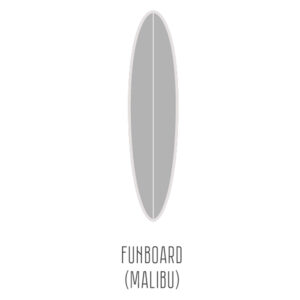 The mini mal – aka the mini Malibu board – is also known as a fun board and is essentially a shorter longboard, usually in the 7-9 foot range. Mini mals are usually 3 fin/thruster setup (more on fin configurations later) and are the perfect boards for beginner surfers.
The mini mal – aka the mini Malibu board – is also known as a fun board and is essentially a shorter longboard, usually in the 7-9 foot range. Mini mals are usually 3 fin/thruster setup (more on fin configurations later) and are the perfect boards for beginner surfers.
Enough volume and length to make them easy to paddle and catch waves, but also short enough to start turning and progress your surfing.
As one of the most popular surfboard shapes there are a huge range of mini mal surfboards to choose from – including size, shapes, colours and constructions.
When it comes to waves mini mals can handle a huge variety of conditions – but for the most part are great in up to shoulder high surf. As with most board types more advanced surfers can use them in a large variety of conditions and sizes.
Surf Level: All levels
Wave Type: Best in smaller waves, under head high
Shortboard
The shortboard is by far the most recognisable of all the surfboard shapes and if you picture a surfboard in your head right now, the chances are it’s a shortboard!
 Defined as anything under 7 foot, but usually in the mid 6 foot range, shortboards are the most performance orientated of the main 3 surfboard shapes.
Defined as anything under 7 foot, but usually in the mid 6 foot range, shortboards are the most performance orientated of the main 3 surfboard shapes.
Because of this they’re most suited for intermediate and advanced surfers, but there are also types of shortboard (such as the groveller) which are useable by a wider range of surfers.
Most commonly setup as a thruster/3 fin board, quads/4 fin shortboard setups are also increasingly popular at the moment too.
Ideal in a wide range of conditions, but more suited for bigger, powerful waves, the shortboard is usually the end goal for most people who surf.
Surf Level: Intermediate +
Wave Type: Large range, better suited in larger surf though
Even thought the longboard, mini mal and shortboard make up the vast majority of surfboard categories there are a huge range of niche board types out there, all with their own setups and uses;
Fish
 Ah the fish – an instantly recognisable surfboard shape due to its distinctive fish tail design.
Ah the fish – an instantly recognisable surfboard shape due to its distinctive fish tail design.
Super popular in the 70s with the birth of the twin fin setup, fish surfboards have gained popularity recently and combined with quad fins setups options like the Firewire Seaside have become huge successes.
Check out my full video review of the Firewire Seaside here
Or ir you’re looking for a more traditional twin fin fish the Firewire Go Fish is one of my personal favourite boards.
Read my full Fish surfboard guide here
Surf Level: Intermediate +
Wave Type: Range of conditions, but best on clean wave sup to head high
Groveller
Essentially the groveller is a higher volume shortboard, specifically designed for small waves and less than perfect conditions. They also act as a great way for those on longboards and mini mals to transition towards a more traditional shortboard.
Popular groveller options include the Firewire Chumlee, Lost Puddle Jumper and Al Merrick Pod Mod
Surf Level: High end beginner +
Wave Type: Up to head high, range of conditions
Midlength
In the last few years the mid length has become one of the most increasingly popular surfboard shapes and is essentially a more performance oriented mini mal – allowing a higher wave count in less favourable conditions, but more manoeuvrable than you traditional mini mal or longboard.
Both single fin, twinny, 2+1, thruster and quad mid lengths are available depending on the style of surfing you’re looking at doing.
It’s a great option for intermediate surfers looking to get some extra performance over a mini mal and progress their surfing as well as more experienced surfers looking for some small wave summer fun. In fact the Firewire Seaside and Beyond is one of my most ridden boards!
Longer mid lengths are also suitable for high level beginners who are looking to push their skills to the next level too.
Check out my full midlength surfboard guide here
Surf Level: Intermediate +
Wave Type: Waist to to head high+, range of conditions
 Hybrid
Hybrid
Hybrid boards is basically another term to describe any surfboard shapes which merge two key designs together.
Hybrids are a pretty common example when they mix the characteristics of say a performance shortboard with a more fish type tail.
Surf Level: Depends on the board
Wave Type: Depends on the board
Retro
A pretty loosely defining term for surfboard shapes retro surfboards are often replicas of boards/shapes/designs used in the early years of surfing.
Boards like the Gerry Lopez Thunderbolt or the Mark Richards Twin Fins have all seen a bit of resurgence in popularity, especially with more advanced surfers experimenting with boards and looking for something a bit more unique to ride.
Surf Level: Generally intermediate +
Wave Type: Depends on the board
Asymmetrical
At the cutting edge of modern surfboard design is the asymmetrical board and it’s certainly the most unique of all the surfboard shapes out there.
Slightly odd looking, they’re predominantly designed to perform whilst surfing in a single direction – so either left or right.
Because of this they have pretty bizarre tail, rail and fins setups!
Best left to advanced surfers only, they’re going to perform best on long, reeling point breaks.
Surf Level: Advanced
Wave Type: Point breaks
Finless
As surfers play around with different surfboard shapes and fin setups, the finless surfboard has gained a bit of a cult following.
As you might expect they have no fins and are controlled in a more snowboard rail to rail style, usually involving the surfer being in a squatting position to provide the most control on centre of gravity.
Finless boards range in style and size – from dedicated finless models like the Tom Wegner Tuna to foam boards with the fins simply removed!
A totally different feel, style and skillset from a board with fins it’s almost a different sport altogether with slides, spins and style which is a combination or surfing, skateboarding and snowboarding!
Surf Level: Advanced
Wave Type: Clean waves, perfect for point breaks
Egg/Mini Log
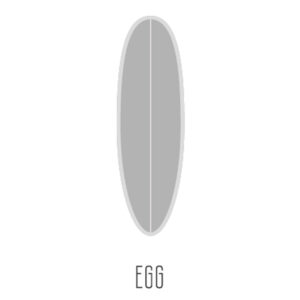 Another predominant hybrid board the egg or mini log is designed to take all the paddle and style of a longboard and pack it into a shorter size – usually resulting in a short, fat board with a longboard style rounded nose.
Another predominant hybrid board the egg or mini log is designed to take all the paddle and style of a longboard and pack it into a shorter size – usually resulting in a short, fat board with a longboard style rounded nose.
Great for long boarders who want to make it easier to travel or progress down to a shorter board an egg surfboard is also a great style of board for beginner and intermediate surfers who want to loose some of the size of a mini mal but retain the flat and stability.
Surf Level: All
Wave Type: Smaller waves, usually under head high
Gun
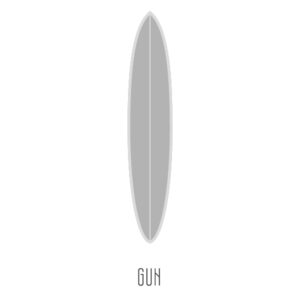 The gun is the weapon of choice for big wave surfers taking on spots like Jaws, Mavericks and Nazare and are certainly not aimed at any surfer under expert!
The gun is the weapon of choice for big wave surfers taking on spots like Jaws, Mavericks and Nazare and are certainly not aimed at any surfer under expert!
When it comes to surfboard shapes they resemble a stretched out shortboard and are usually in the 9 foot range. This gives makes them easier to paddle, whilst the pinched in nose and tail, combined with a thruster setup still allows them the performance needed to big waves.
Modern gun surfboards often have strips of lead glasses into the deck to give the board some extra weight and control on steep drops.
Surf Level: Expert
Wave Type: BIG waves!
Semi Gun
The Semi Gun is as you might expect, the little brother of the traditional gun surfboard.
Designed to be ridden in waves ranging from the overhead to 10 foot range the semi gun excels in big powerful surf. Think Pipeline, Uluwatu and Cloudbreak.
Less stretched than the traditional Gun, the semi gun allows more performance and turns and again mostly have a thruster setup.
Surf Level: Advanced +
Wave Type: Overhead waves +
Step Up
Less a surfboard shape, more a term used to describe a particular board – without sounding super cheesy you might hear a surfer say something like “time to bust out the step up”.
Basically what they’re describing is the fact the waves are now getting much bigger than their standard board can handle and a step up board is needed, which usually means something still performance orientated but a little longer in length than what they usually ride.
Not always to the extent of grabbing a gun or semi gun – but something with a little more length and performance.
Surf Level: Advanced
Wave Type: Head high +
Soft Top/Foamie
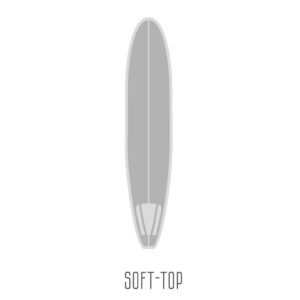 The perfect option for a beginner surfboard, the soft top is exactly how it sounds – a surfboard with a soft top!
The perfect option for a beginner surfboard, the soft top is exactly how it sounds – a surfboard with a soft top!
Also referred to as “foamier” they’re often used by surf school and surf camps they’re super stable and also a lot safer than the traditional boards.
Brands like Mick Fanning Soft Boards have also created more performance orientated soft top surfboards ideal for crowded conditions and smaller waves.
Click here for my full softboard guide!
Surf Level: All
Wave Type: Up to head high, usually smaller, less perfect waves
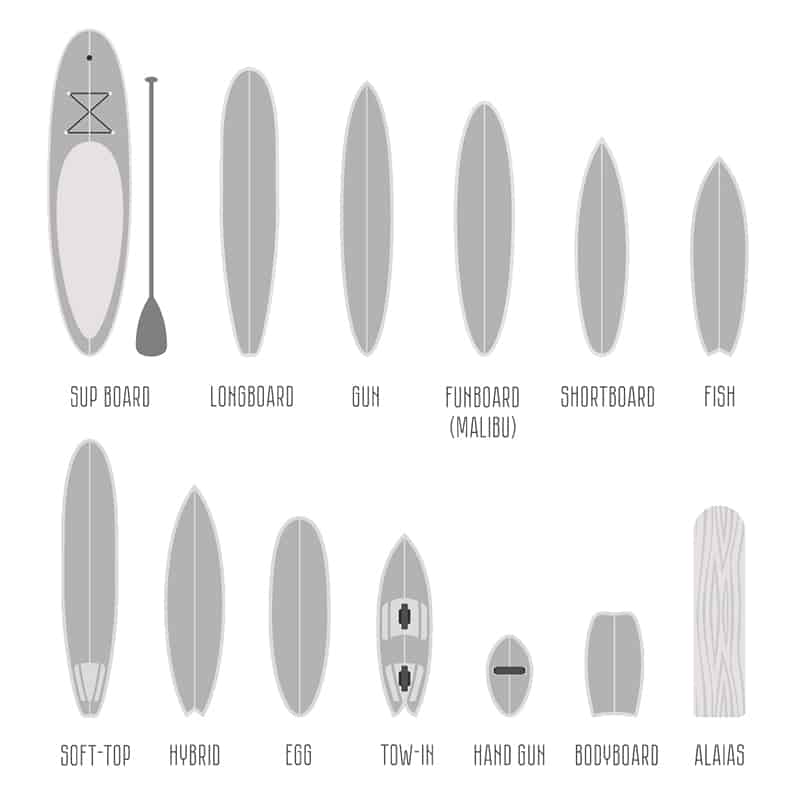
Fin Setups
You might also discover that a lot of surfboards are simply described by their fin setup – so here’s a quick rundown of the full range of surfboards fin setups. Check out the Futures and FCS websites for more info on a huge range of fin setups and templates.
Finless
As the name suggest these board don’t actually have fins! The growing trend of finless boards allows a lot of slipping and sliding across the waves and has a lot in common with the rail to rail control of snowboarding
Single Fin
Again pretty self explanatory – these boards have a singular, central fin. Most commonly found on longboards, but there’s also a going popularity of shorter single fins and mini logs.
Twinnie/2 Fin
The twin fin surfboard is a 2 fin setup, positioned one on each side of the board and are most commonly found on retro fish style boards like the Go Fish. Great for speed but a very skatey feel.
2+1/Sidebites
Another common longboard setup – especially in more modern, performance based longboards – is the 2+1 setups, also known as sidebites. Essentially this is a longboard version fo the thruster, with a single, larger fin in the centre box with two smaller side bites, one either side.
This mean you can also ride it as a single fin too. Sidebites offer a bit more performance and control, especially in steeper waves.
Also pretty common on egg/mini log surfboard shapes too.
Thruster/3 Fin
The most common surfboard fin setup – the thrust is a 3 fin configuration. Great for all round performance.
Quad/4 Fin
One of the more modern surfboard setups, the quad fin setup consists of 4 fins. The configuration creates a lot of speed and is a great setup on a groveller board. Pretty popular at the moment (especially on fish style boards) the quad is less manoruable top to bottom than the thruster but certainly more stable.
5 Fin
Although not many people surf a full 5 fin setup, many boards come with a 5 fin option – which allows you to easily switch between a thruster or quad setup. Some people also run a quad setup with a much smaller, trailer fin as the 5th fin.
Tail Shapes
Round Tail
The round tail is easily recognisable by its rounded curves and provides the surfboard with a looser and easier to turn – making it great for all rounder boards and shortboards. It also holds really well in punchier conditions and is usually the tail of choice for barrel riding.
Pin Tail
The pin tail builds on the hold and control of the round tail board – but its more exaggerated features make it even better for boards specifically designed for big waves and barrels, making it the most common tail shape for both guns, semi guns and custom boards for specific surf breaks like Pipeline and Padang Padang.
Squash Tail
The squash tail is basically the mid ground between the square tail and the round tail – not as blunt as the square but certainly more angled than the round tail. The result is a good balance of both performance and stability – making it the most common surf tail for performance shortboards.
Fish Tail/Swallow Tail
Swallow tails are found on a huge range of boards and give lots of stability and bite on rail to rail turns, due to the 2 points of contact at the tip of each tail. The iconic fish tail is what gives fish surfboard shapes their distinctive look and is much more exaggerated than the standard swallow tail.
Square Tail
The dynamics of the square mean its super easy to catch waves as well and make your way through flat or fat sections of the wave. This extra surface area also adds lots of stability and is a great option for both small wave performance surfboards and also beginner surfboards too.
Which Is The Best Surfboard Shape For You?
So which of these surfboard shapes is best for you?
Well unfortunately there’s no simple answer to that question – it comes down to a huge range of factors like your height, weight, ability and even style.
Whilst I love riding single fin longboards in recent years I’ve also swapped over and now love quad fin shortboards as my style had progressed and I’ve started surfing faster, hollower waves.
The best thing you can do is try a whole heap of different boards and find the one that clicks. It might even be the case that the same board in a slightly different length makes a huge difference too!
For beginner surfers though it’s best to start out on a 3 fin, mini mal – usually around 7 foot, or 8 foot if you’re on the taller or heavier side. From that basis you can decide where you want to go – long boarding for higher wave counts and style, or performance shortboards for bigger waves and tighter turns.
Which surfboard shapes have you tested out?
What’s your favourite?
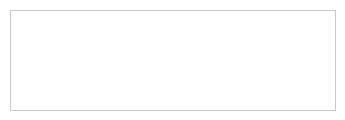
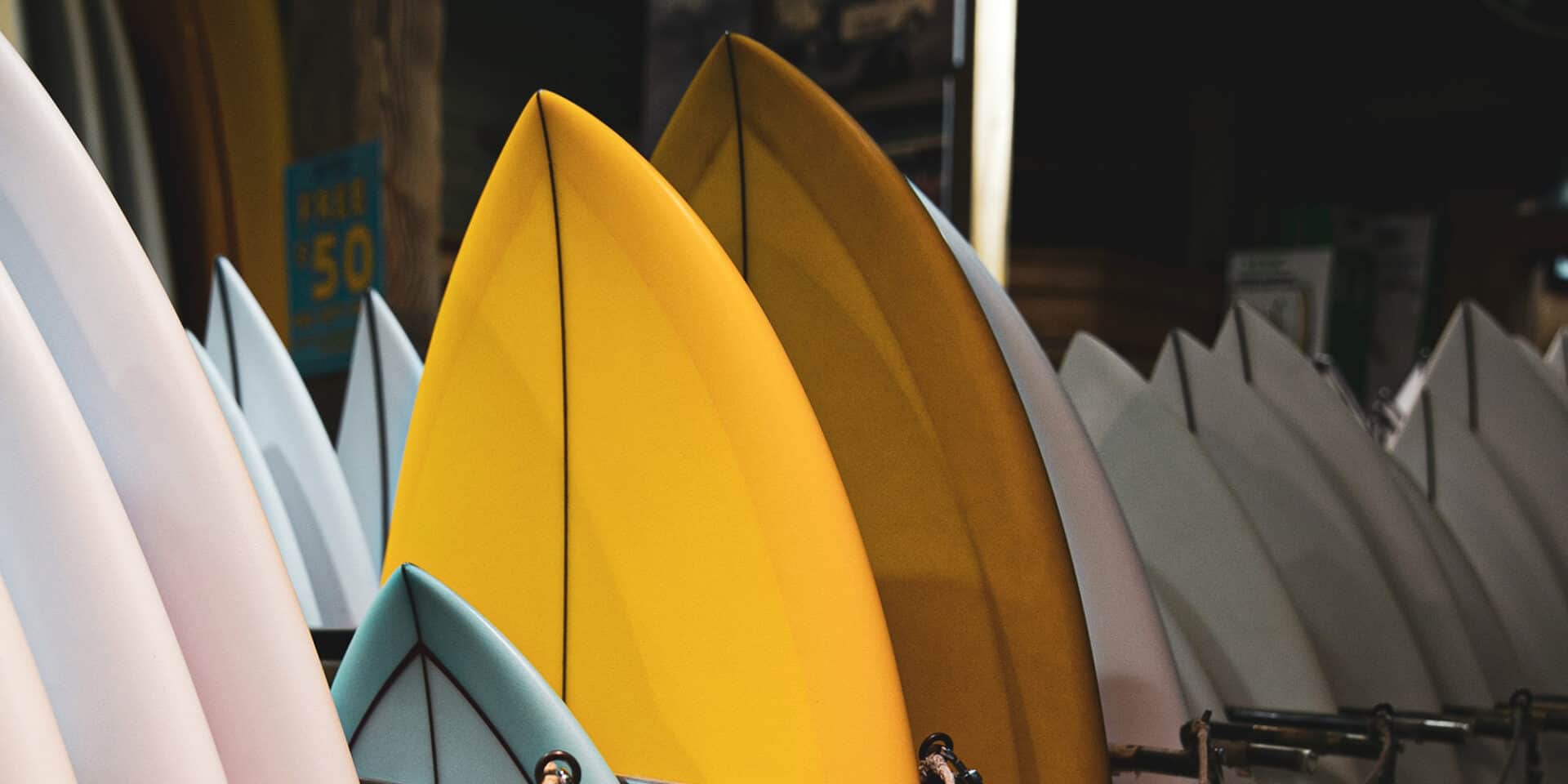
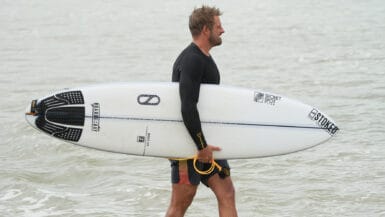
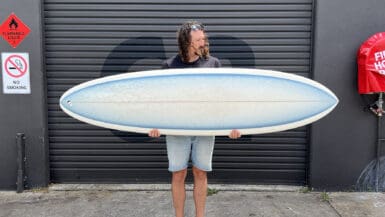
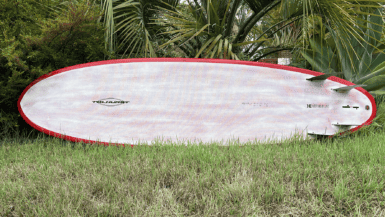
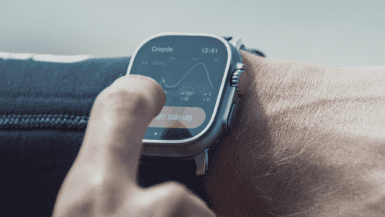
Leave a reply